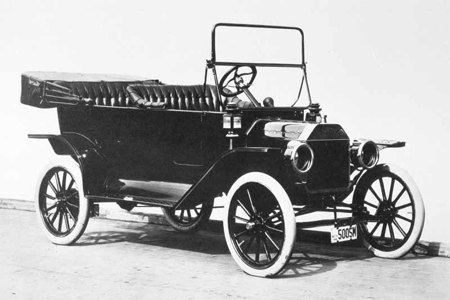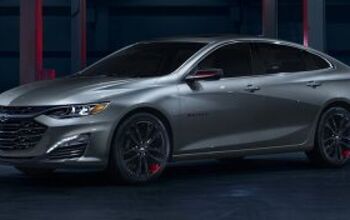Henry Ford: The First Action Hero
I once read that a person with experience caring for horses knows more about what it meant to be a human in the last thousand years than anyone without. Similarly, anyone who's driven a Model T knows more about what it felt like to be an American in the first half of the 20th Century than anyone who hasn't. History records the Model T as a two-fold blessing: it created the American working class and it put them behind the wheel. Again, the map is not the territory. To fully appreciate the Model T's impact on American psychology, you have to get behind the wheel.
Easier said than done. It takes a slim person to squeeze between the Model T's steering wheel and driver's seat. Most modern operators have to enter from the passenger side and slide over. Once there, only the Model T's helm works like a contemporary car's controls. The Flivver's throttle is on the column. Forward speeds are moderated by an unfamiliar lever and pedal combination. Another foot pedal shifts the car into reverse and doubles as a second brake. Before any of this, drivers of Model T's built before 1926 face the daunting prospect of using the 'Armstrong Starter' or hand crank. A second lever on the column retards the spark timing; which makes the starting procedure a bit easier and safer. (Broken wrists and arms eventually led to the development of the electric starter, and many older cars were retrofitted with the device as soon as they became available.)
Once modern passengers crest 20 mph in a Model T, many conclude that the car is a fragile and dangerous Rube Goldberg device. Not so. The Model T was a fully realized automobile built to cope with the challenging conditions of its time. Ford produced more than 15 million of the so-called Tin Lizzies. And while they clatter and squeak interminably, the car could take a real beating. Even the roughest patch of modern roadway is a blessing compared to the nominal 'roads' that T's ably traversed.
Taking the wheel of a nearly 100-year-old car puts one in a museum gallery frame of mind; you expect the machine to behave as carefully as you do. But a Model T is not as hesitant as its novice driver. One would not suppose that 4-inch-wide tires propelled by a 20hp 2.9-liter four-cylinder engine could keep up with a lawn mower, let alone snap your head back on take-off. But Henry Ford knew what he was doing. While it's no quarter-mile champ, a 'T' is unexpectedly quick-– a fact emphasized by the open-air cabins found on most of the early models.
The Model T has three speeds – faster, slower and reverse. With time, the modern driver's mind recalibrates, confidence grows and the little car starts to seem quite nimble and fun. You begin to understand why the Model T was such a beloved vehicle. They were incredibly versatile machines that integrated themselves into their owners' lives in surprising ways. After a few years on the road, many T's found work in the fields as hardy and affordable farm tractors. (The conversion could be done in the barnyard.) And for a car famous for its uniformity– any color you want so long as it's black– most Model T's were highly customized with dozens of available accessories.
Ford produced the Model T from 1908 to 1927. Its impact on American society is impossible to overstate. For example, the Model T helped America win World War One and Two. While German soldiers were often forced to abandon their exquisitely engineered tanks and trucks, millions of American soldiers could fix their internal combustion-powered equipment, thanks to their hands-on experience with the Model T. Writer and essayist E. B. White mourned the Model T's gradual disappearance from the American landscape, saying that "the old Ford practically was the American scene." For better or worse, the Model T changed the world.
The reality of this history is almost lost in the mists of time. But not quite. Although we can't understand what it was like to glimpse a Model T for the first time, that same sense of wonder and freedom still greets the Model T driver when they take the wheel. I don't know how many of the 15 million T's produced are still on the road. But if you can finagle a drive, seize the opportunity with both hands. You'll make a personal connection with one of the most influential and important Americans in our national history.
More by Bryan Myrkle
Latest Car Reviews
Read moreLatest Product Reviews
Read moreRecent Comments
- ToolGuy There was a time when in a place called America there were roads, and they were paved, and they were paved smoothly enough for a vehicle like this. Perhaps our next President will bring back that concept.
- ToolGuy I suppose I will listen before commenting. (TG, what a fair-minded dude!)
- ToolGuy "The technology is much more advanced to be better than a role model driver,”• Do any of you know what a "role model driver" is? No, I guess you wouldn't. 😉
- ToolGuy I might be Batman.
- Lou_BC Well, I'd be impressed if this was in a ZR2. LOL





































Comments
Join the conversation
Nice writeup.